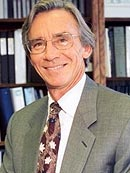Paul J. Woo, Jr.
Paul J. Woo, Jr.

Paul J. Woo, Jr. retired as President and Chief Executive Officer of Sterile Concepts, Inc. in 1996. Sterile Concepts was a custom packager and distributor of single-use medical supplies with annual sales of $200 million. Prior to joining Sterile Concepts, Paul held positions with Carilion Health System (Management Engineer, Department Director, Vice President, Senior VP, Executive VP), Virginia Hospital Association (Management Engineering Consultant), New River Valley Planning District Commission (Regional Planner, Senior Planner, Deputy Director), and Reynolds Metals Company (Industrial Engineer).
He currently serves on the Grado Department of Industrial and Systems Engineering Advisory Board (Chairperson) and the Executive Board of the Robert E. Lee Council, Boy Scouts of America. Paul is a member of the ISE Academy of Distinguished Alumni and the College of Engineering Committee of 100. His past service to civic and professional organizations has included: Richmond Symphony Orchestra Board of Directors, READ Center Board of Directors, Western Virginia Emergency Services Council (President), American Institute of Industrial Engineers (Southwest Virginia Chapter, President), United Way Campaign Section Chairman, Private Industry Council (Roanoke Metropolitan Area, Chairperson), Virginia Hospital Association Task Force on Infectious Waste (Chairperson), Mayor's Task Force for Project Self-Sufficiency (Roanoke), Mayor's Task Force for Project Hope(Roanoke), Commonwealth of Virginia Worksite Health Promotion Task Force, City of Roanoke Work Force 2000 Committee, and Roanoke Valley Poverty Task Force.
Education
- B.S. Industrial Engineering Virginia Tech - 1969
- Master of Urban Affairs Degree Virginia Tech - 1973
Q&A with Paul J. Woo, Jr.
The breadth of the discipline and the systems approach to problem solving and decision making enabled me to work in the various fields that caught my interest.
The specific skills I learned at Va Tech that were the most helpful early in my career included work force and equipment productivity measurement through the use of time-and-motion studies, work sampling, and MTM standard data. Throughout my career I utilized the General Problem Solving/Decision Making Process to provide the structure and discipline needed in managing everything from individual projects to corporate divisions and companies. In addition to providing a systems approach to looking at problems and issues, Industrial Engineering gave me a set of specific tools which I used routinely in every position I held. This included tools such as brainstorming, data collection and analysis, benefit/cost analysis, flow diagrams, and control charts.
When I retired in 1996, I was serving as the President and Chief Executive Officer of Sterile Concepts, Inc. Having a systems approach and being a strong problem solver are critical attributes of effective management. The importance of these attributes was frequently emphasized in my IE courses and was reinforced from the very beginning of my career. In addition, many of the “new” management and quality improvement approaches that came along were generally modifications of what I had been exposed to in the IE Department, and I was therefore able to take a leadership role in their implementation. It may seem overly simplistic, but to a great extent my career progressed the way it did because I tended to refer back to the following core set of IE concepts and tools:
- Think System
- Use the General Problem Solving/Decision Making Process
- Work smarter, not harder
- Improve efficiency
- Improve effectiveness
- Use analytical tools/techniques to transform data into information
Because of Dr. Paul Torgersen's support and recommendation I was accepted into the Master's program of the Department of Urban Affairs and Planning in the College of Architecture and Urban Studies. The combination of my IE undergraduate and Urban Affairs graduate studies led me into career opportunities and community service activities that were very stimulating and rewarding.
At the time I retired, I was using benefit/cost analysis, brainstorming, graphs and charts, flow diagrams, and planning network tools in the strategic planning and decision making functions. More specifically, I used:
- Brainstorming to identify problem causes and alternative solutions as well as to identify potential business initiatives
- Benefit/cost analysis to evaluate manufacturing methods and business expansion alternatives
- Graphs and charts to turn data into information, and to monitor business statistics.
Systems Engineering, which was taught by Dr. Bill Schmidt and Dr. Bob Taylor.
When I was an undergraduate my career plans were not well developed so I don't think I gave much thought to which courses might be more or less valuable.
Human Resource Management and Business Finance courses.
During my work career I volunteered for a number of organizations that brought me personal satisfaction. Among those organizations were the Western Virginia Emergency Services Council and the Private Industry Council in the Roanoke Valley planning district. The Emergency Services Council initiated and coordinated programs that improved the emergency care provided by volunteer and paid rescue squads, hospitals, physicians, and other emergency care personnel. The Private Industry Council was a partnership of the private business sector and governmental agencies. The Council initiated, coordinated, and monitored programs that improved employability and career prospects of low income and other disadvantaged segments of the population.
Become a more serious student prior to the last one and a half years of undergraduate school.


